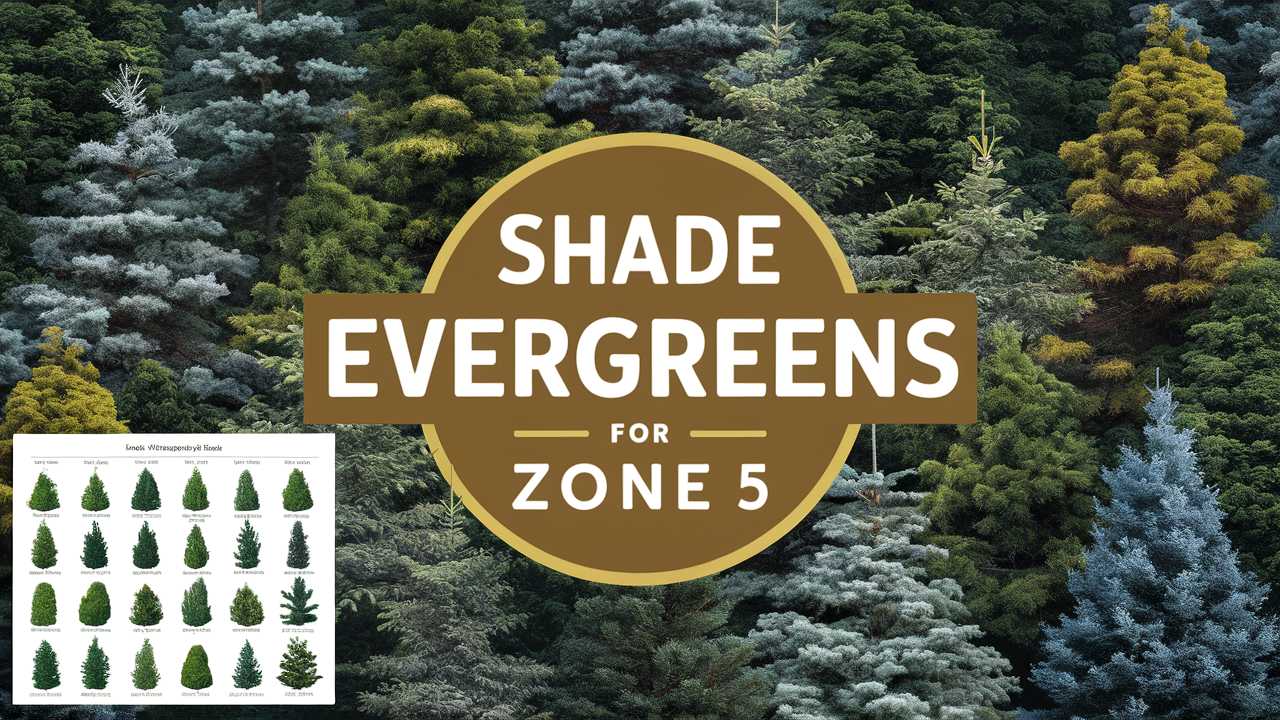This guide will explore ten exceptional shade-loving evergreens suited for Zone 5 landscapes, each adding dimension, texture, and year-round beauty to your outdoor space.
Japanese Holly
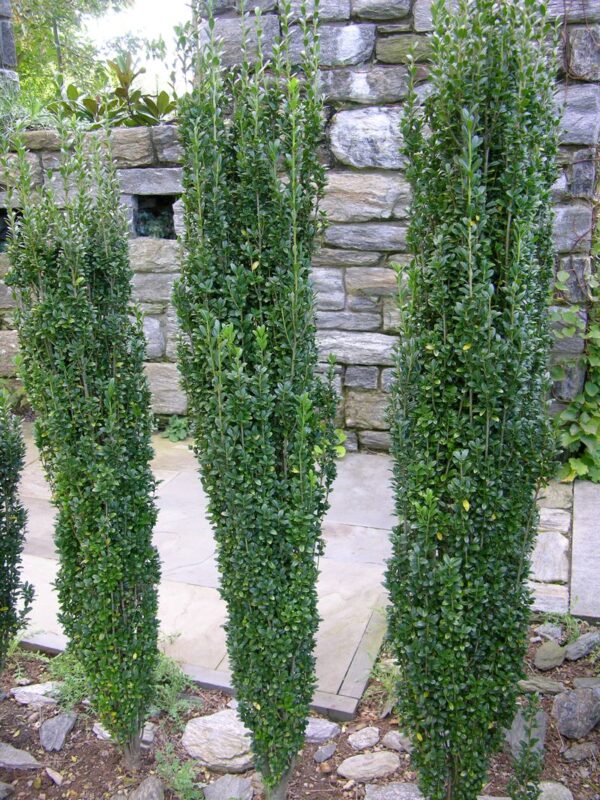
Ilex crenata, commonly known as Japanese Holly, is a versatile shrub that offers year-round appeal without the prickly nature of traditional hollies. Ideal for shady spots, this evergreen thrives in Zones 5-8, making it a suitable choice for many gardeners in cooler climates.
Japanese Holly is often revered for its deep green, glossy leaves that behave like small, rounded-shaped ornaments on the bush, providing an elegant, sophisticated touch to the landscape. Not only is it a deer-resistant option, but it also requires minimal maintenance, making it a favorite among busy gardeners.
This shrub can be grown as a hedge, border, or standalone specimen and can tolerate moderate pruning, making it adaptable to various shapes and sizes. Consider using it in foundation plantings or as a backdrop for other shade flowers; the rich green foliage provides a perfect contrast for spring and summer blooms.
Juniper
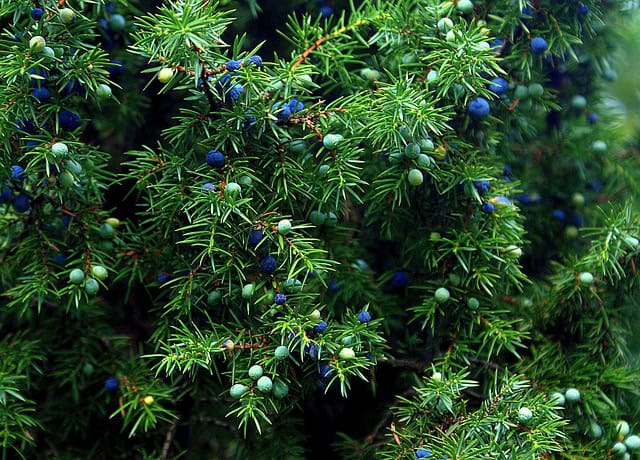
Junipers belong to the Juniperus genus and include a wide variety of species that can thrive in Zone 5, showcasing an impressive ability to adapt to various light conditions, including shade. While some junipers prefer full sun, many tolerate partial shade effectively, particularly the ground cover types.
Junipers are not only beautiful; they are incredibly hardy. Many feature appealing needle-like foliage that varies in color from bright green to silver-blue, adding texture and depth to any garden. Some varieties also provide delightful berries that not only attract birds but can also serve as a culinary delight!
For a shade garden, consider low-growing ground cover types such as Juniperus horizontalis or creeping varieties that help suppress weeds and provide a lush carpet under trees. Their drought-tolerant nature means they won’t demand excessive water, making them a low-maintenance choice for the eco-conscious gardener.
Rhododendron
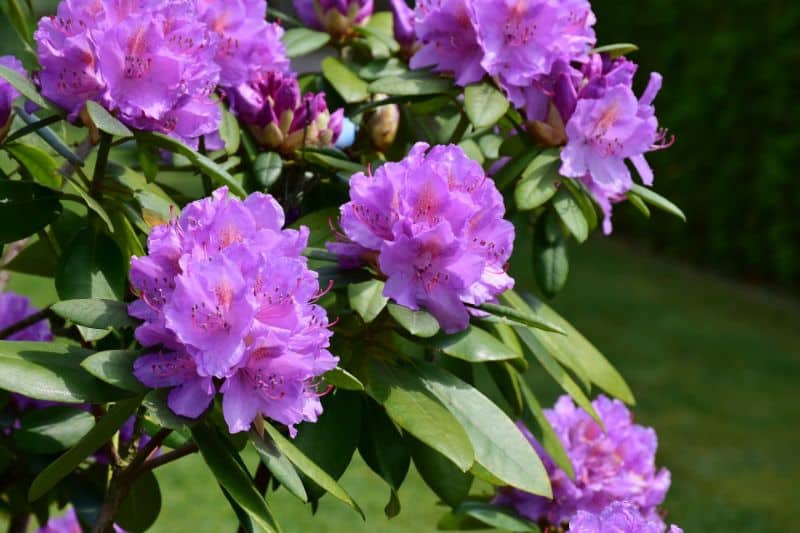
Rhododendrons are show-stoppers in any garden, boasting large clusters of stunning flowers in spring that can brighten up the darkest corners of your landscape. These hardy shrubs thrive in shaded areas of the garden and can endure the cooler temperatures found in Zone 5.
With many varieties available, gardeners can choose from a range of colors, sizes, and flowering times. The evergreen leaves provide year-round interest, while the spectacular blooms can draw in pollinators like bees and butterflies. They prefer acidic soils, so incorporating peat moss or pine needles can help maintain the right pH levels for optimal growth.
To highlight these beauties, plant them in groups for a striking display, or use them as focal points against a backdrop of taller evergreens. Be mindful of drainage when planting—Rhododendrons appreciate well-drained but consistently moist soil.
Daphne
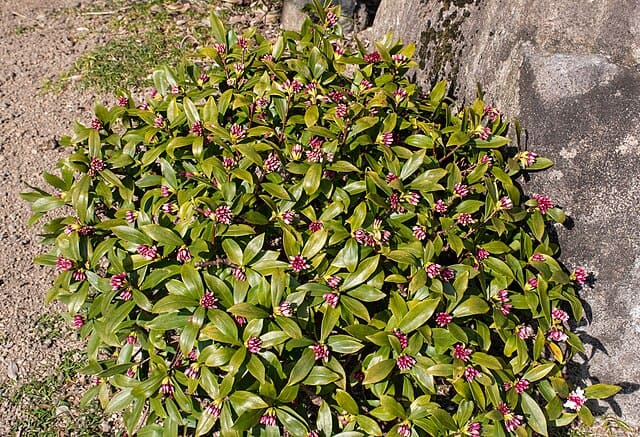
Daphne is a lesser-known gem that offers extraordinarily fragrant flowers in late winter to early spring. These evergreen shrubs can flourish in partially shaded conditions and are remarkably versatile in the landscape.
The hallmark of Daphne is its sweetly aromatic blossoms, which can fill the air with a fragrance reminiscent of spring even in the midst of winter. Variety such as Daphne odora, or winter daphne, is particularly well-suited for Zone 5 and thrives in shaded gardens, producing clusters of delicate pink or white flowers.
While it thrives in rich, well-draining soil, Daphne can be somewhat temperamental, so ensure a protected spot that gets just enough light without excessive harsh sun. Use it as an accent plant near a pathway or patio, enjoying its delightful fragrance as you pass by.
Mountain Laurel
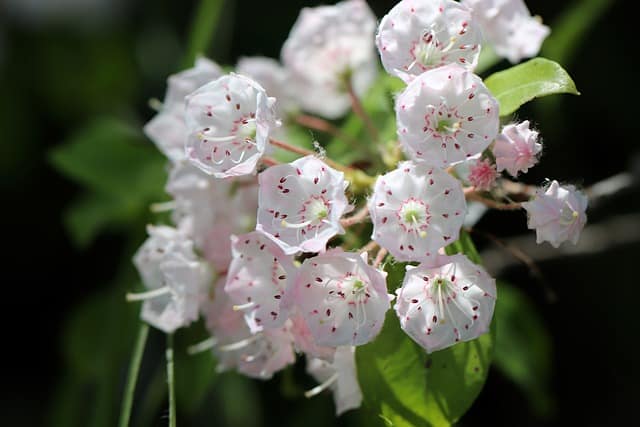
Kalmia latifolia, also known as Mountain Laurel, is a superb native plant for shaded areas in Zone 5. This dense shrub is known for its unique, intricate blossoms that rise above the foliage each spring, presenting shades of white to deep pink.
Mountain Laurel isn’t just beautiful; it’s also an eco-friendly choice. Its thick, leathery leaves are perfect for creating a structured garden appearance while serving as a haven for local wildlife. These plants perform best in acidic, well-drained soils and require some protection from harsh winds.
They are perfect for woodland settings or as part of a foundation planting near larger trees. The stunning blooms, coupled with the plant’s reliable evergreen quality, make it a stunning addition to any shade garden.
Boxwood
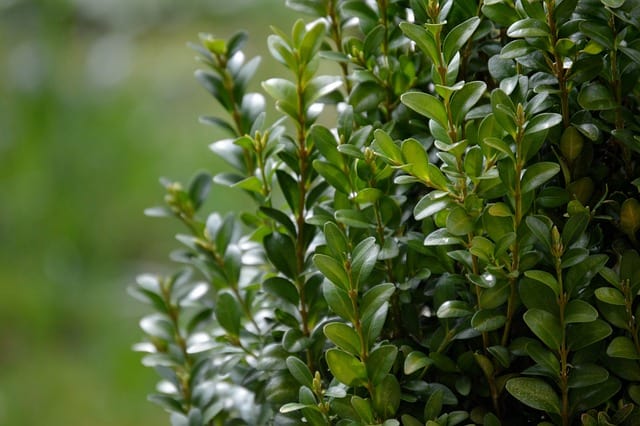
Boxwood (Buxus) is a classic evergreen that brings a sense of formality and structure to any garden design. Its capability to thrive in partial shade makes it a reliable choice for those wanting to create defined hedges or borders in Zone 5 gardens.
The dense foliage of boxwood retains its rich green color year-round, which means it can serve as a stunning backdrop for seasonal flowers or as a stark contrast against other, more vibrant shades. The versatility in trimming allows homeowners to shape their boxwoods according to their vision for the space, making them a landscaping staple.
Whether used as specimen plants, low hedges, or even in topiary formations, boxwoods add a level of sophistication that can elevate any garden design. Don’t forget to provide adequate moisture in their first growing season to help establish their deep root systems.
Yew
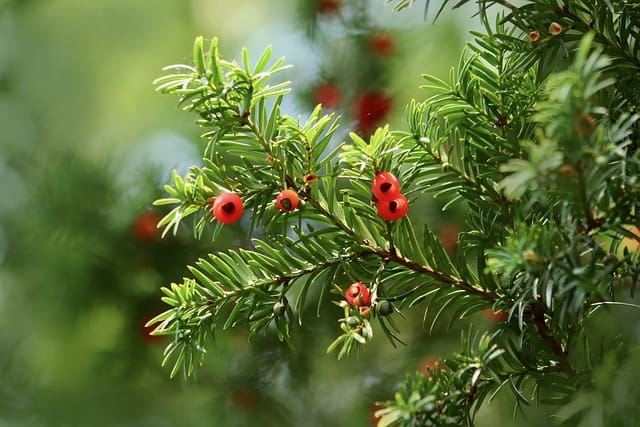
Taxus, commonly known as Yew, is another resilient evergreen that adds elegance and versatility to shade gardens in Zone 5. This hardy shrub can tolerate a variety of soil types and light conditions, making it an excellent choice for gardeners looking for flexibility.
Yews are distinguished by their rich green needles and an appealing growth habit, offering options that range from upright to spreading forms. They can easily adapt their size, making them especially useful in smaller spaces or when creating foundation plantings alongside structures.
In addition to their ornamental qualities, yews are famous for their ability to withstand heavy pruning, allowing them to be shaped into hedges, screens, or topiary. This adaptable nature paired with their ability to thrive in shade makes yews a beloved option in many gardeners’ repertoires.
Wintercreeper
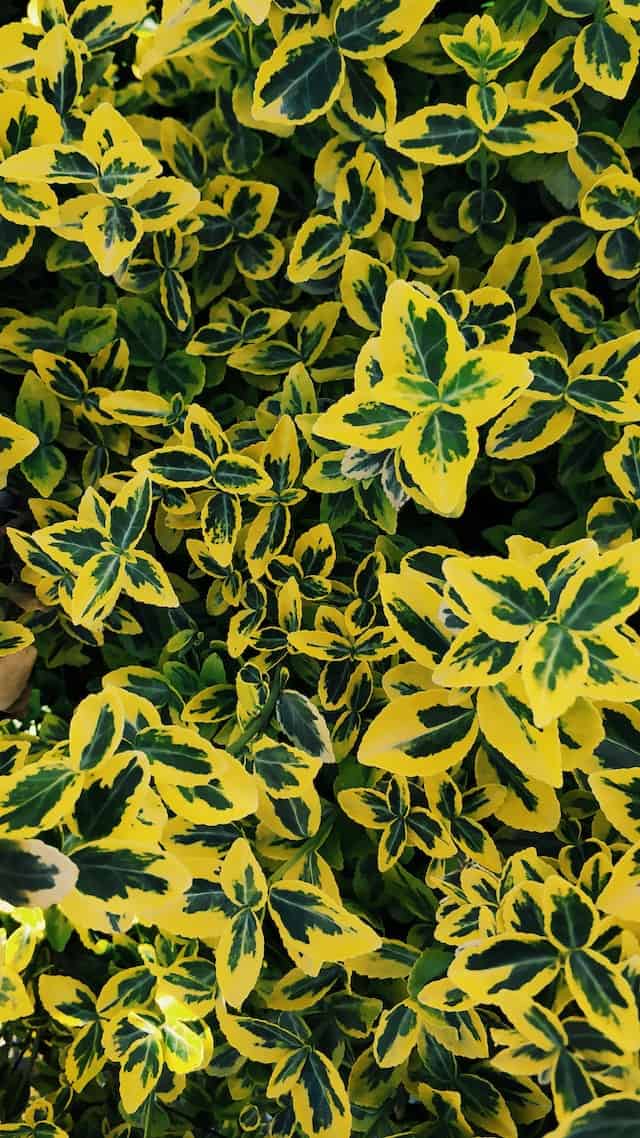
Euonymus fortunei, commonly known as Wintercreeper, is a vigorous evergreen ground cover that blooms in a variety of green or variegated forms. This adaptable plant is perfect for shade and thrives in a range of soil conditions, quickly forming a lush mat that can crowd out weeds and erosion.
With its unique ability to climb, Wintercreeper can be used to cover fences or trellises, or as a ground cover to stabilize steep banks. The vibrant foliage stands out against drab winter landscapes, adding visual interest to shaded areas, while its low maintenance requirements make it an ideal choice for busy gardeners.
Consider planting Wintercreeper beneath larger trees or in less accessible areas where its self-sustaining nature can shine. The quick growth means you’ll see results in no time, providing immediate coverage and a more polished garden appearance.
Dwarf Mugo Pine
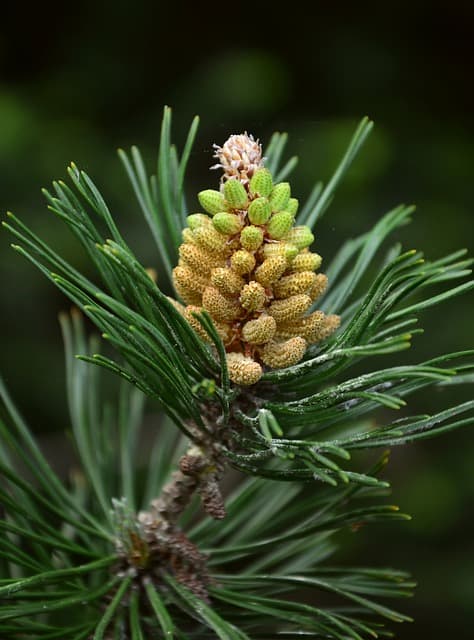
Pinus mugo ‘Mops’, or Dwarf Mugo Pine, is a charming, compact evergreen that suits smaller spaces perfectly. This low-growing conifer performs well in partially shaded conditions, and its dense, bushy appearance adds visual interest to any landscape.
The heavy, soft needles of the Dwarf Mugo Pine keep their rich green color throughout the year, resembling a cozy, fluffy mound in your garden. It’s a tolerant species that can adapt to various soil types, providing flexibility for gardeners looking to pair them with other shade-loving plants.
In your garden, consider Dwarf Mugo Pine for foundation plantings or as edging around paths and flower beds. The plant’s overall hardiness and charming appearance make it an evergreen addition that is both functional and decorative.
Oregon Grape Holly
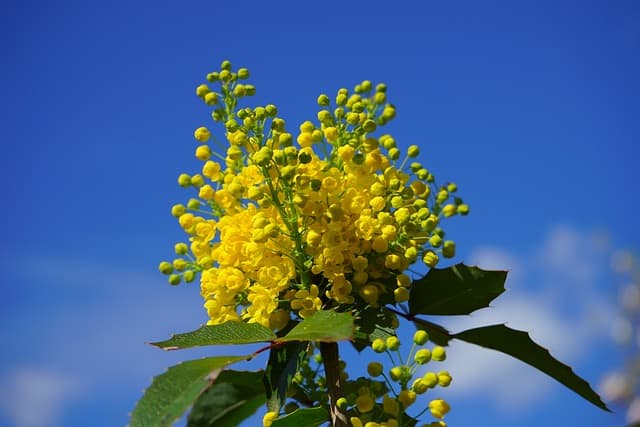
Mahonia aquifolium, commonly referred to as Oregon Grape Holly, thrives beautifully in the shade and offers an interesting contrast to many other evergreen options. This unique plant features dark green, holly-like leaves that develop a bronze hue in winter, complemented by clusters of bright yellow flowers in early spring.
Oregon Grape Holly is also known for its tolerance to drought once established, making it a practical choice for gardeners aiming to reduce water usage. The berries that develop in summer are not only attractive but can be used to create jellies, attracting wildlife to your garden.
This adaptable shrub fits well in naturalized gardens, woodland settings, or as a bright spot among your shade plants. Its year-round appeal comes from its foliage, flowers, and exquisite blueish-purple berries, contributing to biodiversity in your landscape.
Conclusion
Selecting the right shade-loving evergreens for your Zone 5 garden is essential for creating a landscape that retains beauty, texture, and intrigue year-round. The shrubs and plants discussed in this post show that even in areas with less sunlight, there is still a wealth of options available to enhance your outdoor space.


